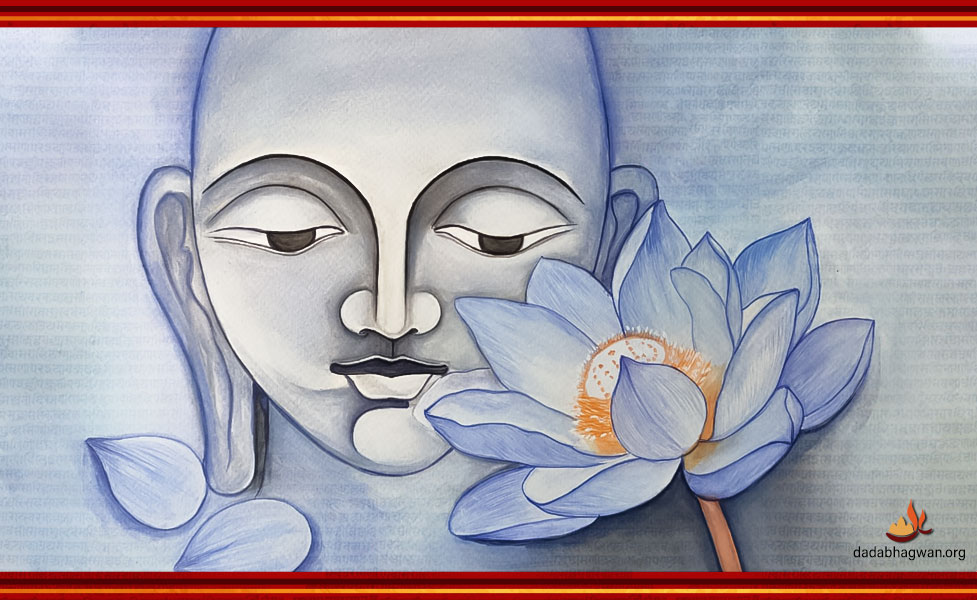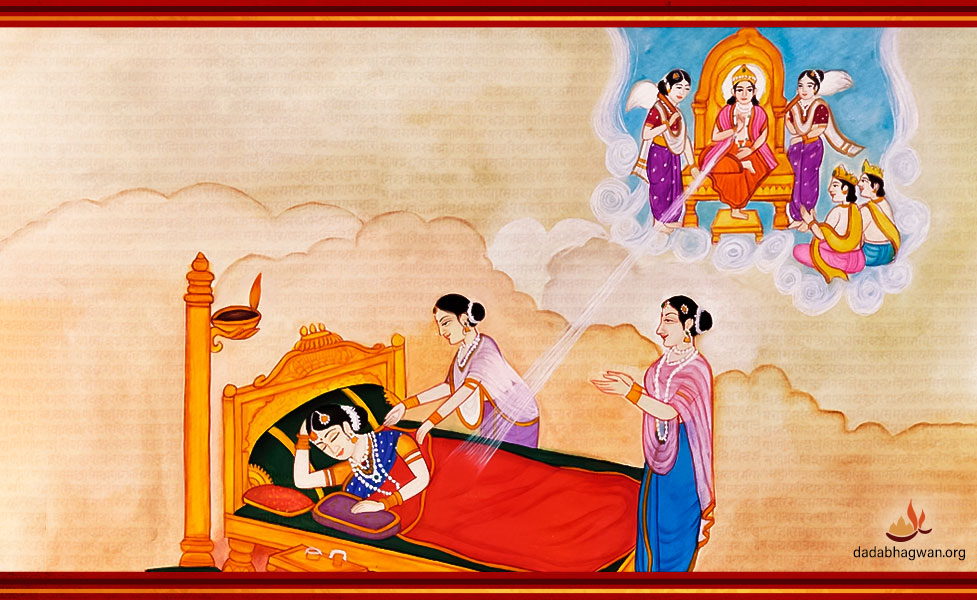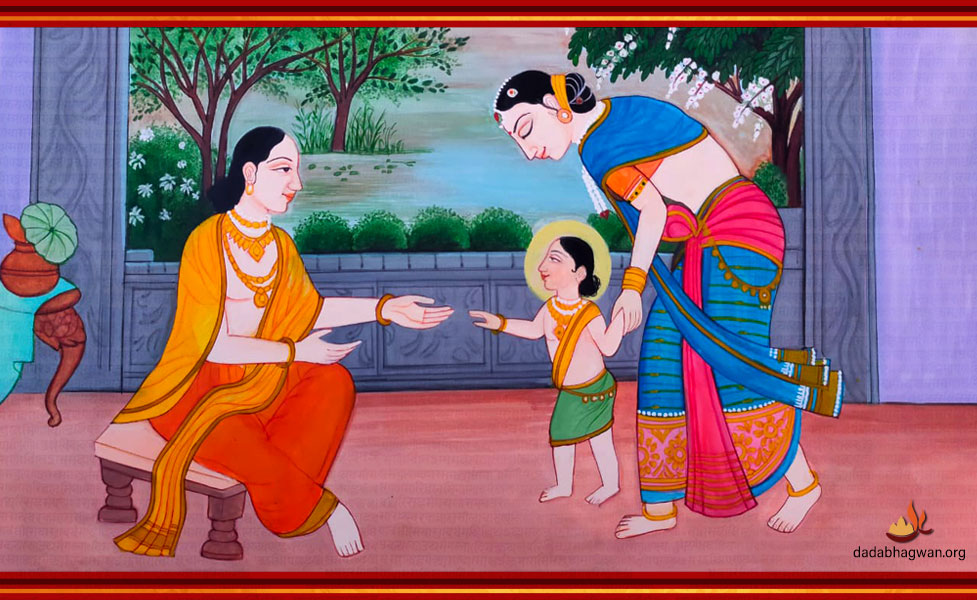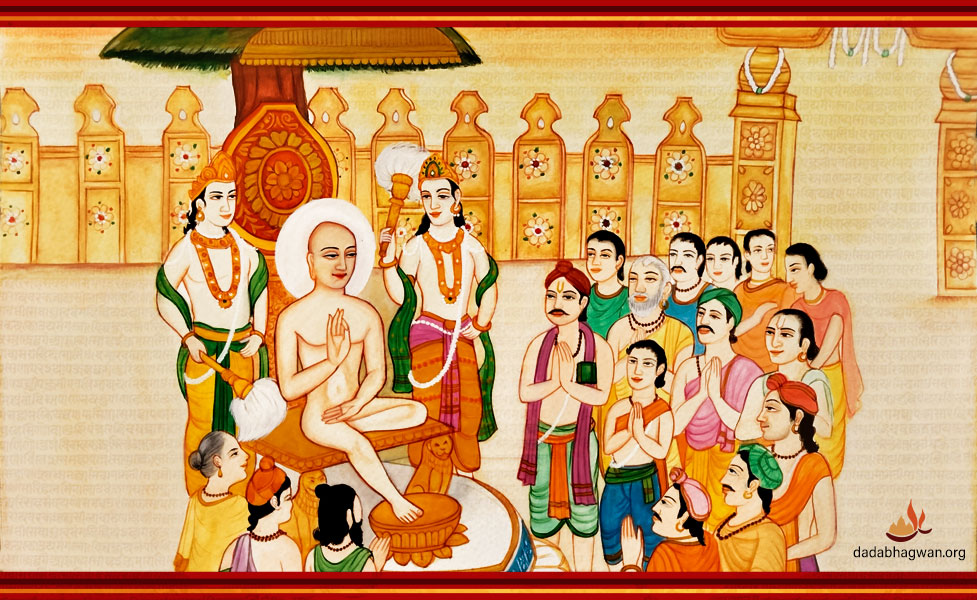THE 21ST TIRTHANKAR SHREE NAMINATH BHAGWAN
Shree Naminath Bhagwan was the 21st Tirthankar of the current time cycle. His complexion was golden and His height was 15 bows. Lord’s laanchhan is blue lotus (neelkamal). Bhrukuti Yaksha-Dev and Gaandhaari Yakshini-Devi are His Shaasan Dev and Shaashan Devi, respectively.

Come, let’s now read about the Lord’s life story and His past two births.
Shree Naminath Bhagwan – Past Births
Lord Naminath's penultimate human birth was as King Siddharth. Upon coronation, he ruled the kingdom very peacefully. As time passed, he became dispassionate and took Diksha, and after taking Diksha, doing the devotional worship, he bound the Tirthankar-naam-gotra karma. On completion of his life as a king, he was born in the celestial world (Devgati).
Shree Naminath Bhagwan – Childhood
After entering into the womb from the celestial world, Bhagwan Naminath was born to King Vijaya and Queen Mother Vapra in the Bharat Kshetra’s Mithila city. Like the mother of every Tirthankar, Mother Vapra also had 14 dreams, which indicated a Tirthankar Lord would take birth from her womb.

Once it so happened that the city of Mithila was attacked by a group of hostile kings, but because the Tirthankar, Lord Naminath, was in the mother's womb, all the enemies bowed to King Vijay (the father of Lord Naminath) and accepted their defeat. Due to this event, the Lord was named 'Naminath'. Right from birth, God had Mati Gnan, Shrut Gnan and Avadhi Gnan. On attaining youth, the Lord got married and subsequently got enthroned.

Diksha and Keval Gnan
In due course, the Lord took Diksha at the right time. After nine months of Diksha, considered as a very short span of time, Naminath Bhagwan attained Keval Gnan (absolute knowledge). After Lord attained Keval Gnan, the celestial gods formed Samovasaran. Naminath Bhagwan, being seated in Samovasaran, gave Deshna. As soon as the people suffering from aartadhyan, raudradhyan and pain listened to the Lord's Deshna, they experienced ultimate peace, attained the Right Vision (Samkit) and moved forward on the path of salvation as shown by the Lord. Listening to the Deshna, many people took Diksha.
Deshna on Four Types of Meditation
In His Deshna, the Lord gave a special understanding of four types of meditation. In every human being, four types of meditation prevail: Raudradhyan, Aartadhyan, Dharmadhyan and Shukladhyan. Of these, the first three types of meditation, raudradhyan, aartadhyan and dharmadhyan, prevail as long as there is ego. When Shukladhyan takes place, the ego is completely eradicated and merges with the Soul. One who attains Shukladhyan is said to be very fortunate; his salvation is confirmed.

Now, let us understand Raudradhyan, Aartadhyan, Dharmadhyan and Shukladhyan in depth.
Raudradhyan: This is one form of meditation; not an action. When someone insults us or when we get angry, at that time our internal state takes a terrible form (of hurting others); that’s called raudradhyan. If anger is vented (on somebody), it is said to be very severe, and if anger runs deeper, then it results in anantanubandhi anger-pride-deceit-greed; at once, infinite births are bound. As a result of raudradhyan, the Soul has to go to hell. When anger occurs, bad sub-atomic particles enter inside us due to which heavy karmas are bound. Hence, it is worth to come out of raudradhyan with awareness. If raudradhyan happens, then decide that I want to come out of it.
Aartadhyan: Aartadhyan means it makes one’s own self suffer; outside no one else knows. At the time of aartadhyan, one worries about the future; one worries regarding the profit and loss in business; one is in a perplexity of dying or running away and thoughts of dying come to the mind. When old age comes, one feels that now I want to die; this, too, is said to be a form of aartadhyan. The internal pain is called aartadhyan, and if it comes out, then it becomes raudradhyan. Aartadhyan is less dangerous than raudradhyan because the result of raudradhyan is a life-form in hell (narak gati), whereas that of aartadhyan is a life-form in animal kingdom (tiryanch gati). God has refused to do aartadhyan (worry). He has said that the result of whatever deeds or karmas we have brought with us is bound to come for sure and it cannot be changed. So why worry? Whatever happens is all vyavasthit. If this (awareness) remains, then aartadhyan-raudradhyan will not happen and exquisite dharmadhyan shall prevail (inside). We should maintain a positive intent; then, whatever happened is correct. These are all keys against aartadhyan-raudradhyan.
Dharmadhyan: When all the circumstances of aartadhyan and raudradhyan come forth, yet while remaining in equanimity, we believe that whatever happened is justice and aartadhyan-raudradhyan does not occur; that’s called dharmadhyan. Dharmadhyan is meditation; not an action. Service to others, recitation of prayers, doing pratikraman, chanting, etc. in which mind-speech-body are used, they are actions, not meditation. Meditation is the result of our inner state. Dharmadhyan does not occur by doing; it arises spontaneously. People who think they are meditating are actually practicing concentration. There is a significant difference between concentration and meditation. Param Pujya Dada Bhagwan says, “Meditation is not to be done; it is an outcome.” With the right understanding within, dharmadhyan arises on its own.
Shukladhyan: Shukladhyan is that in which there is no ego. Shukladhyan arises after attaining the Right Vision (Samkit). As long as there is ignorance, until then aartadhyan, raudradhyan and dharmadhyan will continue to prevail. After attaining Self-Realization from Gnani Purush, the awareness of Pure Soul remains naturally. The greatest meditation is Shukladhyan in which “I am Pure Soul” remains constantly. Then no anxiety or worries remain; someone may abuse us, insult us; but we have a constant awareness of, “He is not saying this to me; I am Pure Soul.” The state of separation always prevails; this is the result of Shukladhyan. This is because there is no karma bound in it.
Shukladhyan has four pillars. In the first two, Right Vision (of I am Pure Soul) is attained and then after it gets deep and deeper, it moves from the unclear and indistinct experience of the Pure Soul to the clear and distinct experience of the Pure Soul. Thereafter, in the third, one comes in the 13th Gunasthanak (out of 14 stages of spiritual development) and Keval Gnan occurs; and the fourth is where one ushers into the 14th Gunasthanak and goes to Moksha. Thus, until aartadhyan, raudradhyan and dharmadhyan remain, Moksha or liberation cannot happen and Shukladhyan is the cause of direct Moksha. In Shukladhyan, one experiences a free state despite being bound by the body. In case aartadhyan-raudradhyan happens, then immediately one should do heartfelt pratikraman. To free ourselves from the karmas bound by aartadhyan and raudradhyan and progress towards Moksha, Param Pujya Dada Bhagwan has shown an excellent method of doing pratikraman. This pratikraman should be heartfelt and must be done with repentance. Here is the method:
“Oh God, I bow down to you. I apologize from the bottom of my heart for the bad words I have spoken to you; I repent and resolve never to do so again.”
By doing so, the mistakes are washed away there and then. When this happens instantly (at that very moment), it is called bhaav pratikraman. Through bhaav pratikraman, the heavy karmas that are bound will get lighter and we will be able to free ourselves from them. Then, the person prevails in the state of dharmadhyan.
As shown by the Lord, if even in 48 minutes before death we atone for the sins of our entire past life with sincere repentance, then it is possible to free ourselves from the sinful karmas originating from aartadhyan and raudradhyan. The Lord has entitled Pratikraman as a very powerful tool for getting free from karmas. This is how Lord Naminath explained four types of meditation in Deshna.
Nirvana
Finally, Naminath Bhagwan attained Nirvana along with thousands of Sadhus and Sadhvis from the Samet Shikharji Mountain.
subscribe your email for our latest news and events





